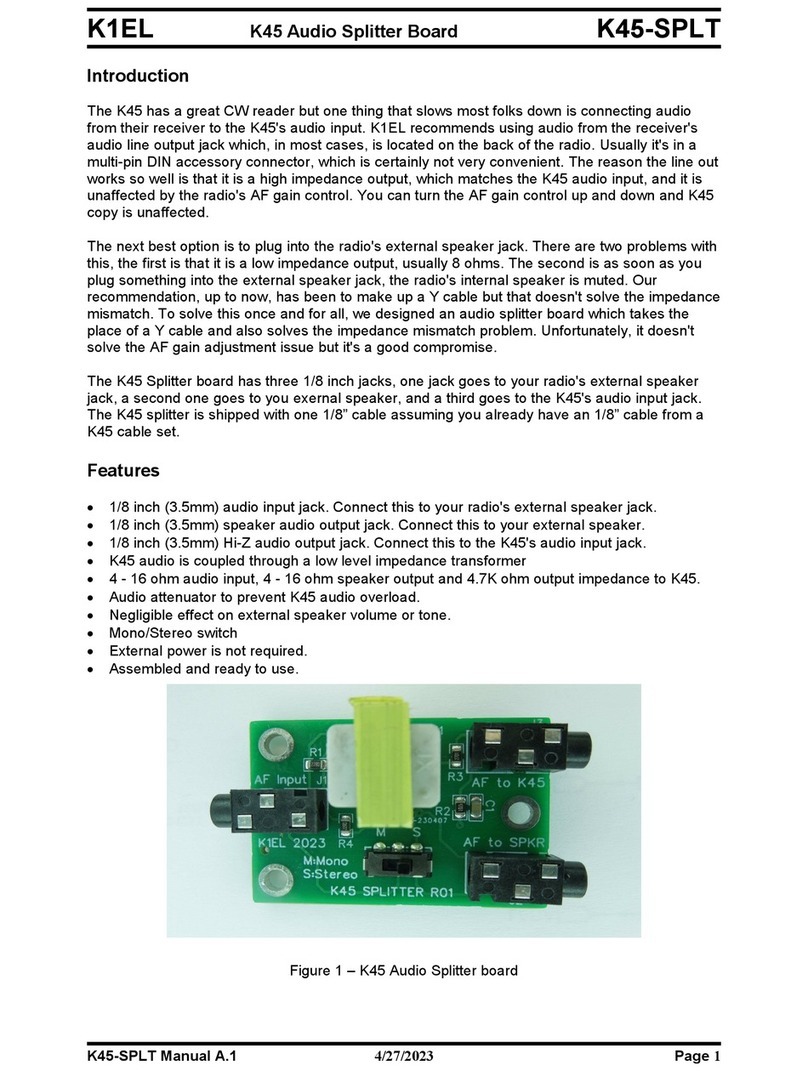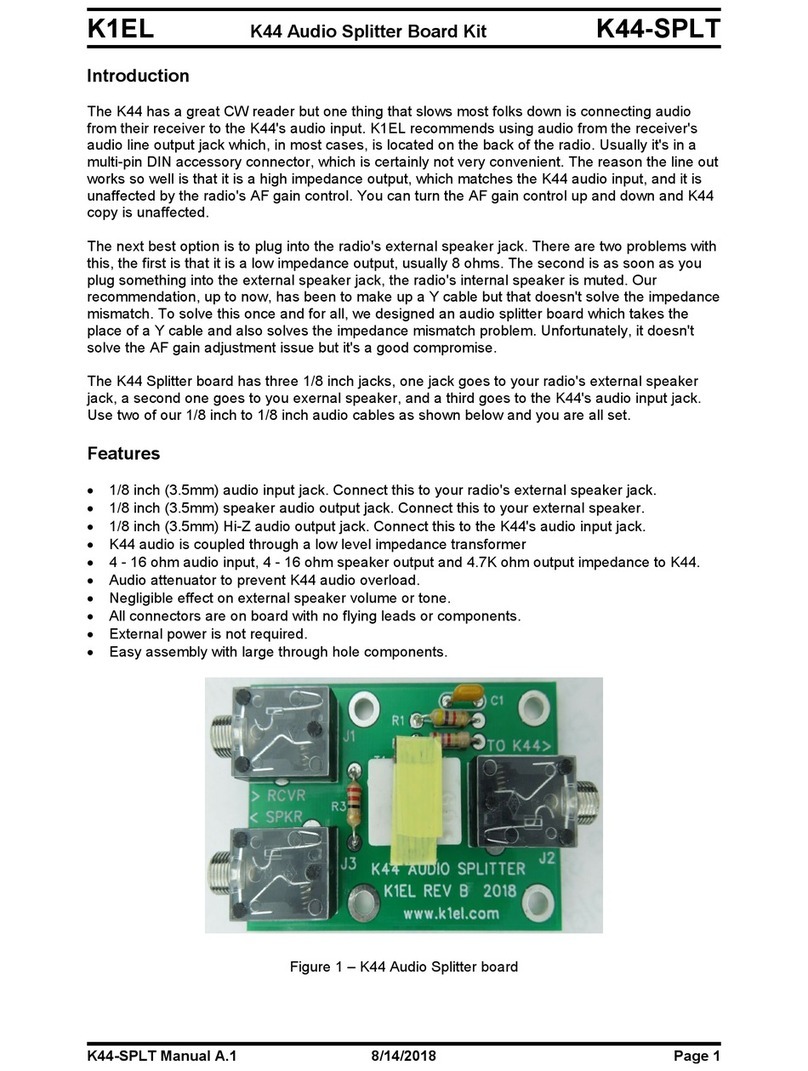K1EL VLF-B User Manual VLF - B
Operation
The VLF-B requires a DC power supply in the range of 9 to 13.5 volts DC. The current draw is
only 20 m . power supply connector is included. Center pin is positive.
The front panel is shown below. There are only three user controls, power on/off, converter
enable and preselector enable. The signal paths in the VLF-B are controlled by reliable
mechanical relays. Pressing the enable push buttons will toggle the enable state. When enabled,
the accompanying LED will light. When the converter is enabled the signal path will be from the
rear panel antenna input connector, through the converter, and then to the radio output
connector. When the converter is not enabled, the signal path is directly from the antenna input
connector to the radio output connector. Since the path is through mechanical relay switches,
there is no DC offset of stray capacitance to be concerned with. preamplifier is included in the
signal path when it is enabled by the front panel push button. This provide an approximate +8 dB
gain after the front end low pass filter.
The back panel is shown below. The power connector size is 2.1mm with center pin positive. The
SO-239 connector on the left is the antenna input and the SO-239 on the right is the RF output.
When the converter is not enabled the output is directly connected to the input, which is bypass
mode. When enabled, VLF input RF is up-converted to the 4 MHZ band so that it can be received
on an amateur band receiver that has general coverage capability. Note that there is a limitation
on the power level through the converter when it is in bypass mode (converter not enabled).
Please keep power level under 1 watt. In any case it is not a good idea to have the converter in
line with transmitted RF, it’s jut too easy to accidentally transmit through the converter and
permanently damage the sensitive internal circuitry.
VLF-B User Manual 11/30/2023 ev 1.0 Page 4
























